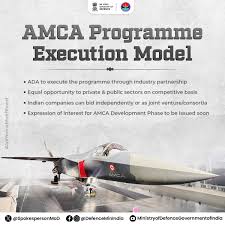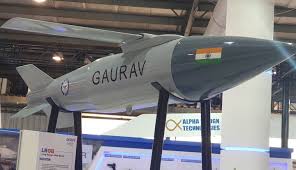My Article published on “The EurasianTimes” website on 10 Jun 25.

On June 8, 2025, the Defence Research and Development Organisation (DRDO) chief announced that Project Kusha is equivalent to Russia’s S-500 and surpasses the S-400 in capabilities. This positions it as a “game-changer” for India’s air defence. It is designed to counter stealth jets, drones, aircraft, and Mach 7 anti-ship ballistic missiles with an 80–90% interception success rate.
Project Kusha is an ambitious Indigenous long-range air defence system being developed by the DRDO. It is also known as the Extended Range Air Defence System (ERADS) or Precision-Guided Long-Range Surface-to-Air Missile (PGLRSAM). Project Kusha bridges the gap between the 80 km MR-SAM and 400 km S-400, integrating with systems like Akash and Barak-8.
It is a critical part of India’s self-reliance initiative, “Atmanirbhar Bharat”. The home-grown solution aims to safeguard India’s airspace from aerial threats by strengthening defences against regional threats, particularly from Pakistan and China. The project has gained attention after the May 2025 India-Pakistan conflict, where air defence systems proved vital against drones and missiles, underscoring the need for indigenous capabilities like Kusha. With a projected deployment timeline of 2028–2029, this system is poised to enhance the operational readiness of the Indian Air Force (IAF) and Indian Navy.
System Specifications
Interceptor Missiles. Project Kusha’s core strength lies in its three-tiered interceptor missile system, designed to neutralise various aerial threats at varying ranges. The M1 Interceptor (150 km) missile would target threats like fighter jets, drones, and cruise missiles at shorter ranges. Its compact 250 mm diameter kill vehicle, equipped with a dual-pulse solid rocket motor and thrust vector control, ensures high manoeuvrability and precision, making it ideal for tactical engagements. The M2 Interceptor (250 km) missile with an extended range can engage advanced targets, including airborne early warning and control systems (AEW&CS) and anti-ship ballistic missiles (ASBMs). It shares the M1’s 250 mm kill vehicle, optimised for agility and accuracy against mid-range threats. The M3 Interceptor (350–400 km), the longest-range missile in the system, is designed to counter larger aircraft and potentially short- and medium-range ballistic missiles (SRBMs and IRBMs). It may feature a larger 450 mm diameter kill vehicle to achieve its extended range and enhanced lethality.
Capabilities. These interceptors boast an impressive single-shot kill probability of 85%, which rises to 98.5% when two missiles are launched in salvo mode, five seconds apart. The missiles likely employ hit-to-kill (HTK) technology, relying on kinetic energy rather than explosive warheads, similar to advanced systems like the US THAAD or SM-3. Dual-seeker technology, combining radar and infrared guidance, enhances their ability to track and destroy low-radar-signature targets, such as stealth aircraft and cruise missiles.
Advanced Radar Systems. The effectiveness of Project Kusha hinges on its state-of-the-art radar systems, particularly the Long Range Battle Management Radar (LRBMR), an S-band radar with a detection range exceeding 500 km. This radar can scan 500–600 km into enemy territory, providing early warning against stealth aircraft, drones, precision-guided munitions, and ballistic missiles. The system integrates seamlessly with India’s Integrated Air Command and Control System (IACCS), enabling real-time coordination with other air defence systems, including Akash, MRSAM, and the S-400. For naval applications, the Indian Navy is developing a 6×6-meter radar for its Next Generation Destroyer, four times larger than the radar on the Visakhapatnam-class destroyer, to detect sea-skimming missiles and ASBMs with ranges up to 1,000 km.
Multi-Layered Defence Architecture. Project Kusha is designed as a multi-layered air defence system. It provides strategic and tactical cover for critical infrastructure, military bases, and urban centers. The system’s versatility allows it to counter various threats, from low-flying cruise missiles to high-altitude aircraft and limited ballistic missile threats. By integrating with India’s Ballistic Missile Defence (BMD) program, including the AD-1 and AD-2 interceptors, Project Kusha forms a robust shield against both conventional and strategic threats.
Technological Innovations. Project Kusha incorporates cutting-edge technologies to ensure operational superiority:-
-
- AI-Enabled Decision Support. The system may leverage artificial intelligence to coordinate intercepts, process real-time data from satellites, radars, AWACS, and UAVs, and optimise target engagement.
- Dual-Seeker Technology. Combining radar and infrared seekers enhances the system’s ability to track and destroy stealthy or low-observable targets.
- Compact Design. The M1 and M2 interceptors’ 250 mm diameter kill vehicles are notably smaller than comparable systems like the US SM-2 or SM-6, showcasing DRDO’s innovative approach to missile design.
Comparison with Global Systems

S-400 Triumf (Russia). The S-400 can engage 36 targets simultaneously at a range of 400 km. Project Kusha aims to match this range with its M3 interceptor and offers better integration with India’s defence architecture, reducing reliance on foreign maintenance and support.
Patriot (USA). While the Patriot is a proven system, Kusha’s lower cost and indigenous design provide a tailored alternative for India’s needs, with potential for greater scalability.
David’s Sling and Iron Dome (Israel). Although similar in some aspects, such as dual-seeker technology, Kusha’s M2 and M3 missiles offer longer ranges and limited BMD capabilities, unlike David’s Sling’s focus on shorter-range threats. The Iron Dome is optimised for short-range rocket interception, while Kusha targets long-range strategic threats, making it more comparable to the S-400 or Patriot.
Project Details & Development Journey
Approval and Funding. In May 2022, the Cabinet Committee on Security (CCS) approved the development of Project Kusha. In September 2023, the Ministry of Defence granted the Acceptance of Necessity (AoN) for procuring five IAF squadrons at an estimated cost of ₹21,700 crore (approximately US$2.6 billion). This investment reflects India’s commitment to building a self-reliant defence ecosystem that addresses modern threats.
Key Partners. The DRDO is leading the Project Kusha, with Bharat Electronics Limited (BEL) playing a pivotal role in developing critical subsystems like radars and battle management systems. The Defence Research and Development Laboratory (DRDL) is responsible for designing the interceptor missiles, while the Research Centre Imarat (RCI) focuses on advanced seeker technology. Collaboration with private industry partners is expected to accelerate development and production, aligning with India’s push for public-private partnerships in defence.
Timeline. As of May 2025, the DRDO has reportedly completed the design phase, with development of critical components underway. BEL aims to complete a prototype within 12–18 months (by November 2026–May 2027). The user trials are expected to last 12–36 months, paving the way for operational deployment by 2028–2029.
Strategic Significance
Self-Reliance and Cost-Effectiveness. Project Kusha is a cornerstone of India’s Atmanirbhar Bharat initiative, reducing dependence on foreign systems like the S-400, which faced delivery delays due to the Russia-Ukraine conflict. At ₹21,700 crore for five IAF squadrons, it is significantly more cost-effective than the $5.25 billion deal for five S-400 units, offering comparable capabilities tailored to India’s operational needs. This cost advantage enhances India’s ability to scale its air defence infrastructure without straining its defence budget.
Regional Deterrence. With China and Pakistan modernising their air forces and missile arsenals, Project Kusha strengthens India’s deterrence posture. Its ability to counter stealth aircraft, cruise missiles, and ASBMs addresses emerging threats in the Indo-Pacific, particularly China’s growing naval and missile capabilities. The system’s integration with the IACCS ensures a cohesive defence network, enabling rapid response to multi-domain threats and enhancing India’s strategic autonomy.
Export Potential. Project Kusha’s advanced technology and competitive pricing position India as a potential global air defence market player. Countries seeking alternatives to Western and Russian systems may find Kusha attractive, boosting India’s defence exports and geopolitical influence. Success in this arena could elevate India’s status as a defence technology provider, complementing its exports like the BrahMos missile.
Challenges and Considerations
Technical Challenges. Achieving the claimed ranges with compact interceptors, particularly the 150 km M1, has raised scepticism due to its small size compared to US SM-2 or SM-6 systems. Ensuring reliability and accuracy against stealthy and hypersonic threats will require rigorous testing and validation.
Development Timeline. The 2028–2029 deployment target is ambitious, given the complexity of integrating advanced radars, AI systems, and interceptors. Delays in prototype development or user trials could push back operational readiness, as seen in past DRDO projects.
System Integration. Seamless integration with existing systems (Akash, MRSAM, S-400) and future systems (AD-1, AD-2) is essential for a cohesive air defence network. Any interoperability issues could undermine the system’s effectiveness and delay deployment.
International Competition. India will face stiff competition from established players like the US, Russia, and Israel in the global air defence market. Demonstrating technological superiority and reliability will be critical for export success and domestic adoption.
Future Phases
Naval Integration. The Indian Navy plans to deploy the M1 and M2 interceptors on next-generation surface combatants, such as destroyers, to counter ASBMs and other maritime threats. The enhanced naval radar system will provide 360-degree coverage, enabling early detection and interception of sea-skimming missiles. This integration underscores Project Kusha’s role in strengthening India’s maritime security, particularly in the Indo-Pacific region, where threats like China’s DF-21D “carrier-killer” missiles pose significant challenges.
Future Enhancement. Project Kusha is the first phase of a multi-phase program. Phase II aims to develop interceptors with ranges exceeding 400 km and anti-hypersonic capabilities, potentially rivalling Russia’s S-500 system. This long-term vision underscores India’s ambition to remain at the forefront of air defence technology, addressing future threats like hypersonic missiles and advanced stealth platforms.
Conclusion
Project Kusha represents a monumental leap in India’s quest for self-reliance in defence technology. It promises to deliver a versatile, multi-layered air defence shield capable of countering diverse threats by combining advanced interceptors, long-range radars, and AI-driven systems. A cost-effective price tag and a focus on indigenous innovation strengthen India’s strategic autonomy and position the country as a potential leader in the global defence market. However, overcoming technical challenges and meeting the ambitious 2028–2029 timeline will be critical to realising its full potential. As India advances toward operational deployment, Project Kusha is a testament to its growing technological prowess and commitment to safeguarding its skies.
Please Add Value to the write-up with your views on the subject.
Link to the article on the website:-
For regular updates, please register your email here:-
References and credits
To all the online sites and channels.
Pics Courtesy: Internet
Disclaimer:
Information and data included in the blog are for educational & non-commercial purposes only and have been carefully adapted, excerpted, or edited from reliable and accurate sources. All copyrighted material belongs to respective owners and is provided only for wider dissemination.
References:-
- Press Information Bureau (PIB), Government of India, “DRDO Chief Briefs on Indigenous Long-Range Air Defence System ‘Project Kusha’.” PIB Release, June 8, 2025.
- Bedi, R. (2023, September 10). India approves indigenous long-range air defence system under Project Kusha—Jane’s Defence Weekly.
- Bharat Electronics Limited. (2025, May 15). Annual report 2024–2025: Progress on Project Kusha.
- Defence Research and Development Organisation. (2024). DRDO newsletter: Advances in air defence systems.
- Gupta, S. (2024, December 12). Project Kusha: India’s answer to the S-400. The Times of India.
- Indian Ministry of Defence. (2023, September 15). Acceptance of Necessity (AoN) for Project Kusha. Press Information Bureau.
- Sagar, P. (2024, November 20). Project Kusha and India’s multi-layered air defence strategy. The Diplomat.
- Singh, R. (2025, March 15). How Project Kusha could transform India’s defence exports. India Today.
- The Hindu, “Project Kusha Will Be India’s Answer to S-500, Says DRDO Chief.” The Hindu Defence Correspondent, June 8, 2025.
- Hindustan Times, “Explained: What Is Project Kusha and Why It Is a Game-Changer for India’s Air Defence?” Hindustan Times Defence Desk, June 9, 2025.
- Economic Times (ET Defence), “DRDO’s Project Kusha: India’s Indigenous Answer to S-400 and THAAD.” ET Defence, May 2025.
- Livefist Defence, Shukla, Shiv Aroor. “India’s Kusha Air Defence System: Details, Development and Deployment Plans.” Livefist, June 2025.
- Business Standard, “DRDO’s Project Kusha: DRDL, BEL, RCI Key Partners in Long-Range SAM System.” Business Standard Defence, September 2023.
- Jane’s Defence Weekly, “India Advances Work on Multi-Layered Air Defence with Project Kusha.” Janes.com, February 2025.
- ORF (Observer Research Foundation), Das, Abhijit Iyer-Mitra. “Strategic Implications of India’s Long-Range Air Defence Ambitions.” ORF Occasional Paper, March 2025.
- Vayu Aerospace and Defence Review, “Kusha, Akash-NG, and the Future of Indian Air Defence.” Vayu Defence Review, Issue Q2 2025.
- South Asia Monitor, “India’s Air Defence Evolution: From Akash to Kusha.” South Asia Monitor, April 2025.



